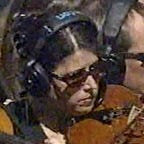The Spirit of Healing
The Moltmen, post #3
From the beginning, our group was informed by our personal experiences of the Spirit, informed by the context of the Charismatic churches in which we were raised. Our hope was to make sense of some of the events that we had witnessed and participated in, events that we do not understand in the same way we once did, but feel still hold a sense of meaning and importance. We discovered the importance of having a contained space in which to re-encounter and re-embody the associated trauma in order to integrate the emotional, mental, and physical pieces of the experience. Furthermore, we were able to reassess our understanding of the Spirit and see it as the force that runs through what is happening in this moment, instead of an outside influence that must be sought or earned. In this light, healing from trauma happens in a theatrical and communal space in which we re-encounter ourselves, others, and the ever present Spirit that runs through it all.
As we considered what our experiences might mean in the context of our current psychological understanding, we realized the ways in which they create a space for individuals to integrate their trauma back into their bodies, and to put words to what they had experiences in a way that had previously been inaccessible. Trauma is deeply dissociating, and people who go through it experience a disconnect between their thoughts, emotions, perceptions, and physical sensations. Healing is found when people are provide a space in which they are able to find a reconnection between these fragmented experiences. In the same way that van der Kolk described yoga, theater, and other activities provide a contained space for reintegration, the charismatic church provides a culturally agreed upon way for people to act out and encounter some of their traumatic experiences in order to re-embody them. As van der Kolk describes, “Traumatized human beings recover in the context of relationships: with families, loved ones, AA meetings, veteran’s organizations, religious communities, or professional therapists. The role of these relationships is to provide physical and emotional safety, including safety from feeling shamed, admonished, or judged, and to bolster the courage to tolerate, face, and process the reality of what has happened.”¹ The charismatic activities of the Church, such a speaking in tongues and being slain in the spirit represent a similar act of embodying roles that otherwise feel too dangerous to encounter.
We also discovered that this understanding of the ways charismatic spirituality do not remove the influence of the Spirit from the process of healing, but instead provides a reframing that is more similar to how Jurgen Moltmann describes the Spirit. Instead of the Spirit acting as an external influence that introduces something that was previously inaccessible, but instead the Spirit is the active force that allows for people to connect with each other and with the split aspects of their individual and collective experiences. As Moltmann states, “Where the Holy Spirit is present, God is present in a special way, and we experience God through our lives, which become wholly living from within. We experience whole, full, healed and redeemed life, experience it with all our senses.”² This means that nothing needs to be sought or earned in order to heal from trauma, but that it already exists within the individuals and communities that seek this experience of healing.
The Spirit is often portrayed as an external force that individuals must earn or beckon in before they are able to experience its presence. In this context, healing in the Spirit is not readily accessible but instead must be earned. However, when the Spirit is seen instead as an ever present source of life, healing becomes readily available. The focus moves from creating a space in which the Spirit will show up, to creating a space in which people feel enough containment to engage in the difficult work of processing their experiences. This does not make the work easy, but empowers individuals by cultivating a space in which they are capable to access healing and to engage with the Spirit that is running through them.
…
- Bessel van der Kolk, The Body Keeps the Score: Brain, Mind, and Body in the Healing of Trauma. (New York: Penguin Books, 2015), 220.
- Jürgen Moltmann, The Source of Life: The Holy Spirit and the Theology of Life. (Minneapolis: Fortress Press, 1997), 10.
…
Bibliography:
Moltmann, Jürgen. The Source of Life: The Holy Spirit and the Theology of Life. Minneapolis: Fortress Press, 1997.
Van der Kolk, Bessel. The Body Keeps the Score: Brain, Mind, and Body in the Healing of Trauma. New York: Penguin Books, 2015.
